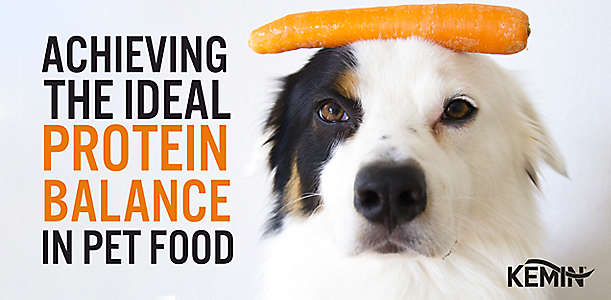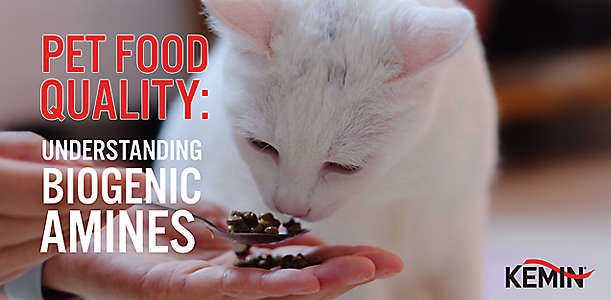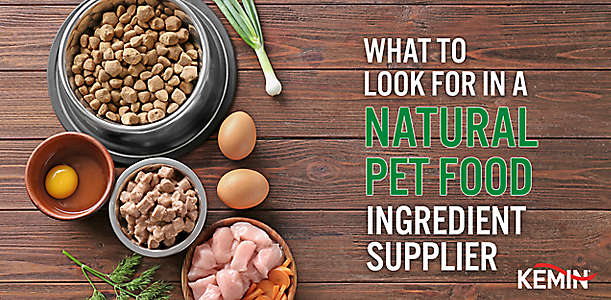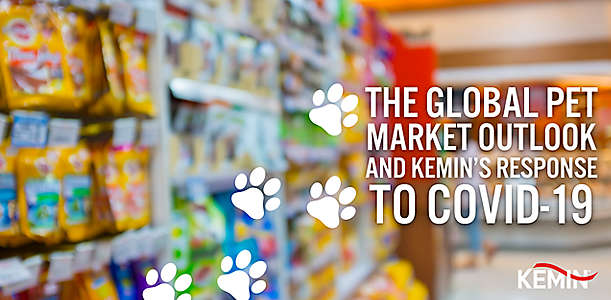Rendered animal protein meals are at a high risk for oxidative degradation as they make their way from the renderer to their destination - in this case, the pet food manufacturer. Below are five factors to consider when determining an effective method to keep rendered raw materials fresh and maintain high quality.
1. Target Shelf Life of Final Pet Food
To determine the proper treatment for rendered meal, it’s important to consider the target shelf life of the final pet food product. Protein meal that’s destined for a pet food product with a desired shelf life of 3 months will have a different antioxidant treatment than a meal destined for a product with a target shelf life of 3 years. Insufficiently treated protein meals have been shown to have a negative impact on achieving desired pet food shelf-life.
2. Rendering Raw Material
The animal protein meal composition is a critical factor impacting the rate at which it oxidizes. The fatty acid profile can differ based on what the animal was fed. For example, fish meal from wild-caught fish may oxidize more rapidly than farm raised varieties due to the higher EPA and DHA levels. As poultry is fed more grain-based diets, protein meal can accumulate higher levels of unsaturated fatty acids that results in a more challenging meal to stabilize. Animal protein can also be subjected to varying conditions pre-rendering, including freezing or high temperatures that can have a negative effect on stability. In addition, the composition of the raw materials can change dramatically, such as addition of bone residue. All these conditions can have some effect on the meal composition and resulting shelf life.
3. Protein Meal Species
The animal species also determines factor guiding how to manage oxidation in the rendered meal. Antioxidant application point is crucial to treatment success. Protein meals oxidize at different rates due to different fatty acid profiles. The range of rendered protein meal species can be divided into 3 categories:
- Poultry - chicken, turkey, duck blends
- Red Meat - pork, beef, lamb
- Fish and marine meal - most diverse and unique
Animal protein meals from these 3 categories have very distinct fatty acid profiles. Poultry and red meat protein meals provide a wide range of protein sources and suppliers and each of these have their own unique challenges and each ingredient and supplier needs to be evaluated independently for antioxidant application level and location to ensure proper control of oxidation. In fish rendering, there is a tremendous variety of fish sources and storage requirements and it is recommended that proper antioxidant levels are added at the beginning of the process since many of these products are seasonal and can be stored over a longer time (up to 6 to 12 months) and are prone to self-combustion if not managed properly.
4. Where Antioxidant is Applied in the Rendering Process
Antioxidants are commonly added at the end of the rendering process, such as to the protein meal after grinding and to fats prior to storage or loadout. Every plant design and ingredient challenge is different, and in some cases we also recommend adding antioxidant at other upstream process steps: to the raw materials at the beginning of the rendering process, and at the press before grinding.
Using multiple antioxidant application points can more effectively control oxidation and is especially beneficial for meals with a fast oxidation rate, or meals that will be stored long-term.
5. Your Antioxidant Supplier
Choosing a high-quality antioxidant is key for controlling oxidation in rendered products, but it’s also important to choose a trusted supplier. Quality ingredients are insufficient unless they’re incorporated properly into a meal, raw material, or pet food formula. As the leader in antioxidant solutions, Kemin has a broad portfolio of natural and synthetic antioxidants for use in pet food and rendering facilities. Kemin also provides its customers with a suite of custom services, including personalized technical support, efficient laboratory testing, and complete application equipment support. These services provide assurance that the best antioxidant is added at the right time and location and that our team is available to support your needs.
Natural Product Solutions for Rendering:
- NATUROX® - is the industry leading solution designed to preserve rendered animal fats and meals from the rendering industry to the petfood company.
- VERDILOX® - a blend of antioxidants developed to provide more sustainable options for preserving animal fats and meals (particularly more unsaturated).
- PARAMEGA™ - optimal solution to preserve fish and vegetable oils.
Synthetic Product Solutions for Rendering:
- RENDOX® - specifically formulated to stabilize animal fats and protein meals during the rendering process.
- PET-OX® - formulated to stabilize pet food ingredients (fats, oils and raw materials) through to the final petfood products.
- TERMOX® - formulated to stabilize fats, oils, raw materials as well as finished petfood products that are highly suspectable to oxidation.





